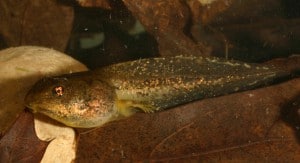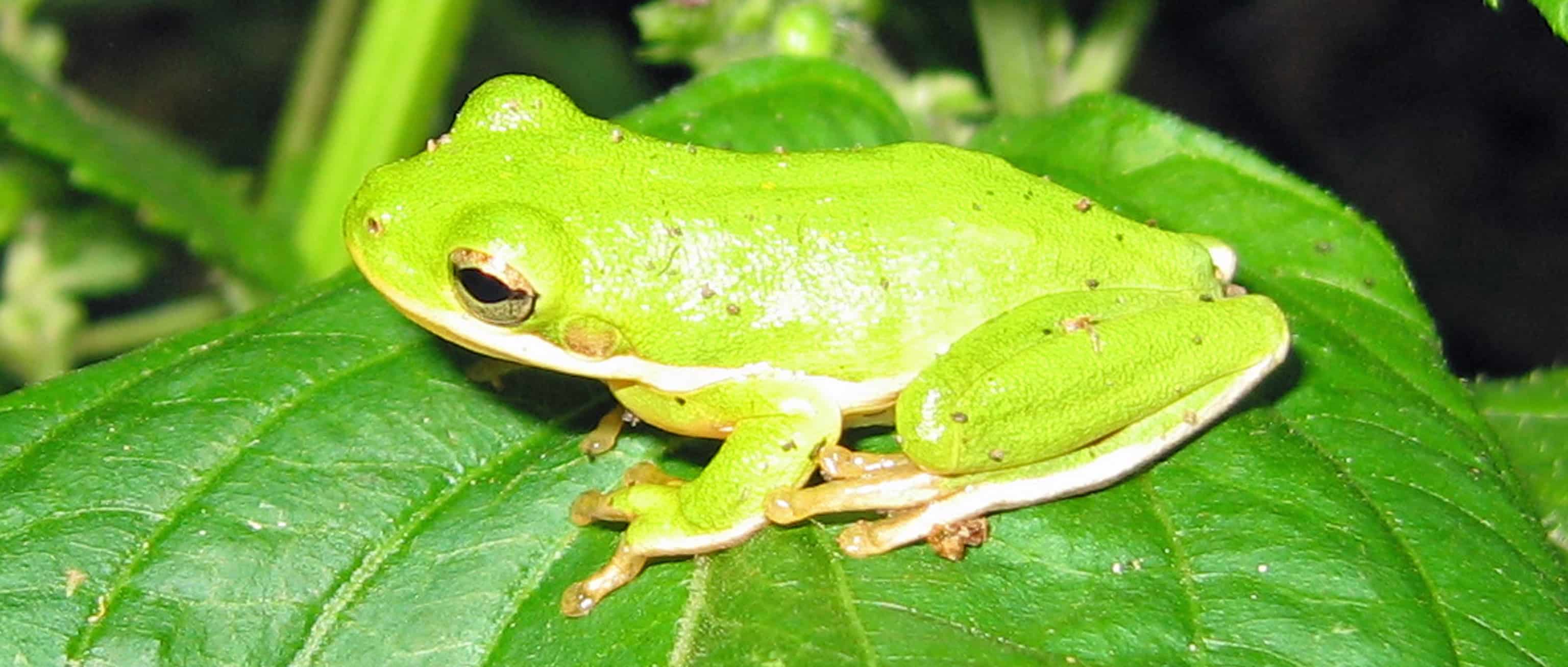Share this article
How Frogs Cope With Road Salt and Brackish Water
Some frogs may be able to adapt to brackish, salty water, according to new research.
“Coastal frogs are less likely to avoid placing their eggs in salt water,” said Molly Albecker about a population of American green tree frogs, Hyla cinerea, while presenting her research at the Ecological Society of America’s annual conference in Baltimore. Albecker is a biology researcher at the East Carolina University in Greenville, N.C. working on the ongoing study.
In order to see whether this ability to tolerate more brackish water was a characteristic of the tree frog species in general, Albecker participated in studies that examined the kinds of water that inland and coastal populations of green tree frogs and a related species, Cope’s gray tree frog (Hyla chrysoscelis), preferred.
In the wild, male green tree frogs usually mount the females, who then will piggyback it around sampling pools that can resemble the water-filled pails. The females use a pelvic patch that may allow them to detect salinity, among other things.
They gave pregnant females different choices in which to lay their eggs by laying out plastic pails that resemble sampling pools. The researchers filled some pails with salt water and others with fresh water to determine what the frogs would favor.
Albercker said that they found females of both green tree frog populations as well as the other species prefer to lay their eggs in fresh water. But inland female green tree frogs were pickier about laying their eggs in salt water than their coastal cousins.
She said they aren’t clear exactly why the coastal frogs have adapted a higher ability to deal with salt water, but it could have to do with more mucus glands that provide them a defense.
They then watched these different scenarios to see how many tadpoles hatched in each of them, and found that coastal eggs had higher hatching rates than inland frog eggs.
Albecker said that studies like this can determine how biodiversity along the coast of North Carolina may be affected as the area becomes more brackish with sea water rises.
Road Salt Hopping
But rising sea levels aren’t the only way that salt is entering amphibian ecosystems. A study published recently in Environmental Toxicology and Chemistry found that wood frog (Rana sylvatica) tadpoles in Ohio may grow more when exposed to road salt, leading to larger adults.
But there’s a catch — juvenile wood frogs have a lower survival rate.

Wood frog tadpoles grew larger in ponds contaminated with road salt. The salt appeared to restrict the zooplankton population, which competes for the algae that tadpoles feed on. Image Credit: Michael F. Benard
“This study really shows that you need to look across multiple life stages to get a good look at what environmental pollutants are doing,” said Kacey Dananay, a PhD student at Case Western Reserve University and lead author of the study.
One of the reasons for this could be that the salt seemed to give zooplankton a hard time growing. Since zooplankton feed on some of the same algae as wood frogs, the salt may have resulted in the frogs having more to eat.
But the researchers aren’t exactly sure why the juveniles don’t survive as much.
“We would predict the frogs that are larger at metamorphosis would do better — larger body mass is usually an indication that they are more fit,” Dananay said. “Maybe they’re more susceptible to disease or there’s a physiological change we can’t see.”
Further studies are planned on the physiological effects salt has on wood frogs.
Header Image: An ongoing study has found that American green tree frog tadpoles that live on the coast can better tolerate brackish salt water after hatching than a population of inland tree frogs.
Image Credit: Greg Schechter, licensed by cc 2.0








